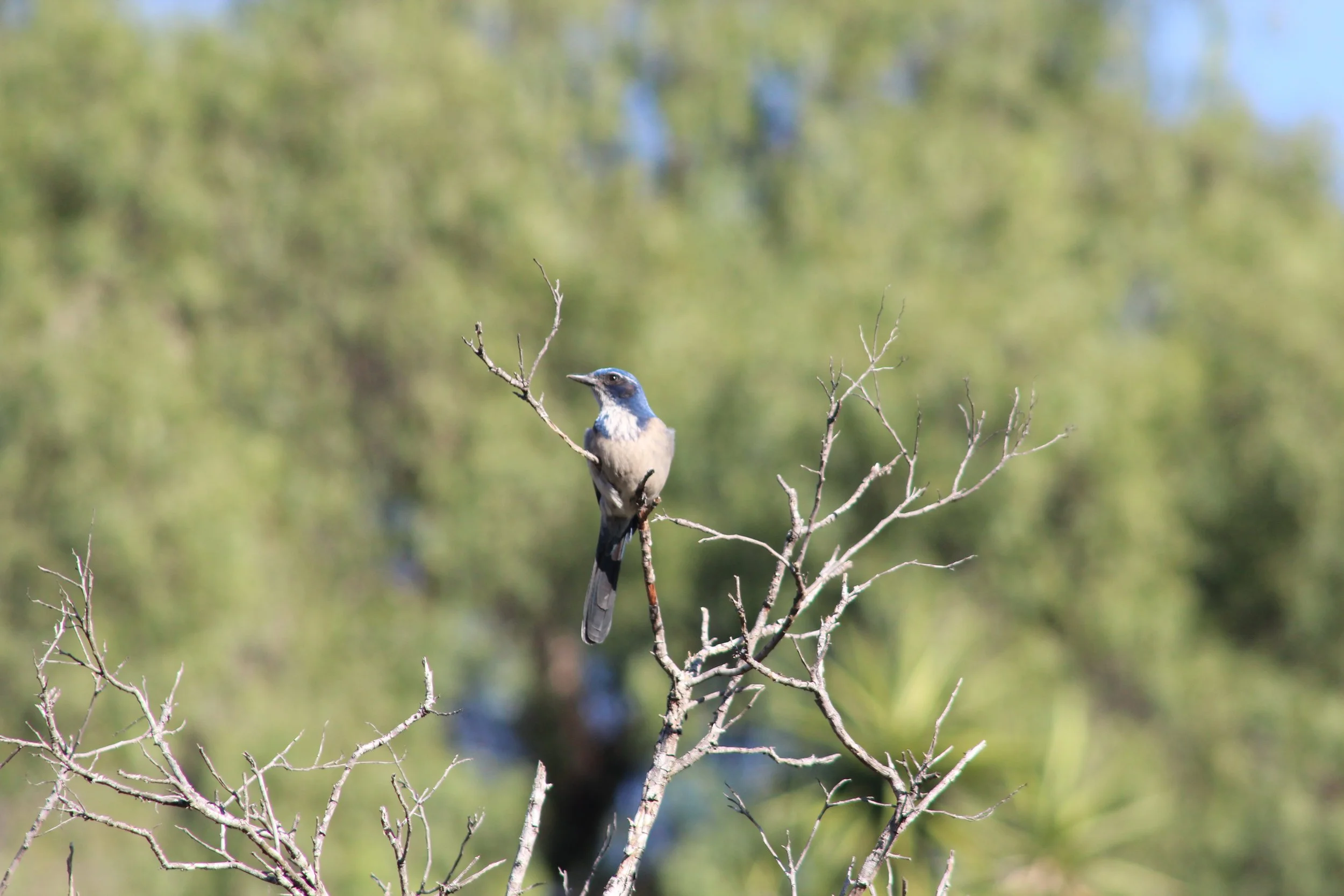By Chance Austin-Brecher
Spring is in the air! I apologize for the cliche, but it is an indisputable fact that spring is in the air and that the birds are out there right now, flapping around and singing their songs.
I hope you’ll forgive this cliche as well: it’s true that San Diego really only has two seasons: spring and summer. Spring starts around November or December, when the rains begin, and really hits its stride in February, historically the rainiest month in these parts. It’s around this time that the plants awaken from their hibernation over the late summer months, bringing out bees and flowers, which in turn bring fruit and seeds and birds, who you may remember from earlier. Birds, of course, famously delight in the culinary joy of fruits, seeds and bugs. And when there’s a bounty of food, the birds start to build their nests.
Birds are the wildlife we share the most space with and likely encounter most frequently (at least consciously anyway, there’s a whole mess of bugs out there). Because of this, it’s really incumbent on all of us, but especially those of us who spend a lot of time in green spaces, to understand just how sensitive birds are during nesting season and to act courteously and respectfully when we share those spaces.
This is all really just my long winded attempt to impart a few important things to look out for if you’re hiking the trails, volunteering with us in the canyons, or even just spending some time in your own backyard.
One of the first tell-tale signs that you may be near a bird nest or nesting grounds is witnessing a mating display, which can be difficult to spot or hard to miss depending on the bird. For instance, a potential pair of red-tailed hawks will circle each other way up in the sky, making their iconic hawk screech (which you may recognize whenever there’s a bald eagle on TV), before the male does a series of showy dives, flight maneuvers, or even handing off prey to the female mid-flight, finally letting down his legs and touching her briefly from above. It’s less likely you’ll see smaller birds doing their displays, but it’s always a possibility! So if you are lucky enough to witness two lesser goldfinches chasing each other and touching beaks or even just hearing an orange-crowned warbler warbling away, you know you’re not too far from the spot where two literal love birds will build their nest.
Another major sign of a nearby nest is territorial behavior. If you’re hiking through a canyon and all of a sudden there’s a hummingbird swooping and screeching at you, you’re likely passing through its territory and a nest is hidden somewhere not too far away in a shrub or tree. You may also be walking to your car in the morning and see a California towhee attacking your vehicle’s windows or mirror. This is because the towhee has spotted its own reflection, thinks it’s a competing male, and is defending its territory. The poor guy will spend quite some time defending himself from, well, himself, just because he thinks it’s somebody else trying to encroach on his nesting/feeding territory.
Lastly, if you catch sight of a bird with something in its beak, be it a bug or sticks or moss, repeatedly returning to the same location, it’s either building a nest or feeding its young. This is the easiest way to find a nest, obviously, but I must strongly discourage you from ever going looking for one. First, there are some highly intelligent nest predators, such as scrub jays and crows, who can figure out where another bird’s nest is by watching your actions, which means they are getting a meal of someone else’s offspring because of you. There’s also the risk of interrupting the nesting process or causing the parents to abandon their young altogether. Like I said before, birds are extremely sensitive during nesting season, and it’s best to leave nature to do its thing. Not to mention, if you end up preventing a sensitive or endangered species, like the California gnatcatcher, from producing more offspring, not only are you harming that species’ chances for survival, you’re also potentially in legal trouble.
I’m not trying to be biased when I say that a lush San Diego spring is one of the most beautiful times of year anywhere on earth. Human action is unfortunately a major contribution to climate change and habitat loss and because of this, it is our responsibility to protect that beauty. A big part of helping the environment is taking direct action and being out there making a difference, but sometimes the best action we can take is none at all. I hope you’ll do your small part to learn a little more about the birds with whom we share this land and the ways they work to continue their lineage. And I hope you’re even able to witness the often spectacular behaviors that make it possible…from a safe distance.

